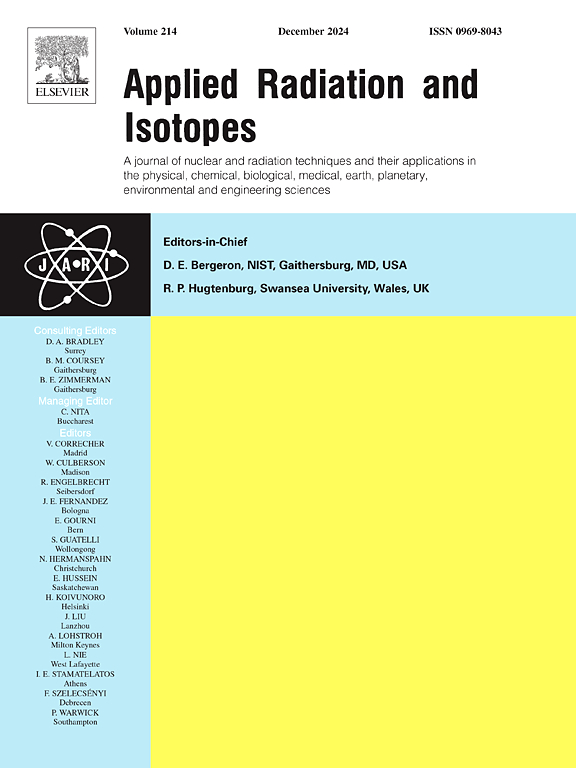Study of radiation exposure to radon in groundwater using scintillation-based RnDuo technique: A statistical analysis for risk assessment
IF 1.6
3区 工程技术
Q3 CHEMISTRY, INORGANIC & NUCLEAR
引用次数: 0
Abstract
Radon in household water, particularly from groundwater sources, is a well-known health concern. Radon in groundwater is typically produced by radium in the aquifer's rocks, which may be originated from geogenic uranium or be transported from distant areas. In this study, radon levels were measured for the first time in groundwater samples (N = 80) collected from the foothills of the Kumaun Himalaya using the scintillation-based RnDuo technique, with the aim to assess whether exposure to radon in the water poses a significant health risk to the general public. Some (N = 41) of these samples were also analyzed using inductively coupled plasma mass spectrometry (ICP-MS) and LED fluorimetry for uranium concentrations, to investigate if geogenic uranium is source of radon in groundwater. The estimated health risks of radon and uranium in the analyzed water samples suggest no potential danger to the public. Weak correlations were observed between radon and uranium concentrations, indicating that the source of radon in groundwater is not related to local geogenic uranium mineralization. The findings will be valuable for future research on radionuclide exploration and radiation protection applications.
基于闪烁RnDuo技术的地下水氡辐射暴露研究:风险评估的统计分析
家庭用水,特别是地下水中的氡是一个众所周知的健康问题。地下水中的氡通常是由含水层岩石中的镭产生的,这些镭可能来自地源性铀,也可能是从遥远地区运来的。在这项研究中,首次使用基于闪烁的RnDuo技术测量了从Kumaun喜马拉雅山麓收集的地下水样本(N = 80)中的氡水平,目的是评估水中的氡暴露是否对普通公众构成重大健康风险。其中一些样品(N = 41)还使用电感耦合等离子体质谱(ICP-MS)和LED荧光法对铀浓度进行了分析,以调查地源铀是否是地下水中氡的来源。经分析的水样中氡和铀的估计健康风险表明对公众没有潜在危险。氡与铀浓度呈弱相关关系,说明地下水中氡的来源与当地地源性铀矿化无关。研究结果对今后放射性核素勘探和辐射防护应用研究具有重要意义。
本文章由计算机程序翻译,如有差异,请以英文原文为准。
求助全文
约1分钟内获得全文
求助全文
来源期刊

Applied Radiation and Isotopes
工程技术-核科学技术
CiteScore
3.00
自引率
12.50%
发文量
406
审稿时长
13.5 months
期刊介绍:
Applied Radiation and Isotopes provides a high quality medium for the publication of substantial, original and scientific and technological papers on the development and peaceful application of nuclear, radiation and radionuclide techniques in chemistry, physics, biochemistry, biology, medicine, security, engineering and in the earth, planetary and environmental sciences, all including dosimetry. Nuclear techniques are defined in the broadest sense and both experimental and theoretical papers are welcome. They include the development and use of α- and β-particles, X-rays and γ-rays, neutrons and other nuclear particles and radiations from all sources, including radionuclides, synchrotron sources, cyclotrons and reactors and from the natural environment.
The journal aims to publish papers with significance to an international audience, containing substantial novelty and scientific impact. The Editors reserve the rights to reject, with or without external review, papers that do not meet these criteria.
Papers dealing with radiation processing, i.e., where radiation is used to bring about a biological, chemical or physical change in a material, should be directed to our sister journal Radiation Physics and Chemistry.
 求助内容:
求助内容: 应助结果提醒方式:
应助结果提醒方式:


